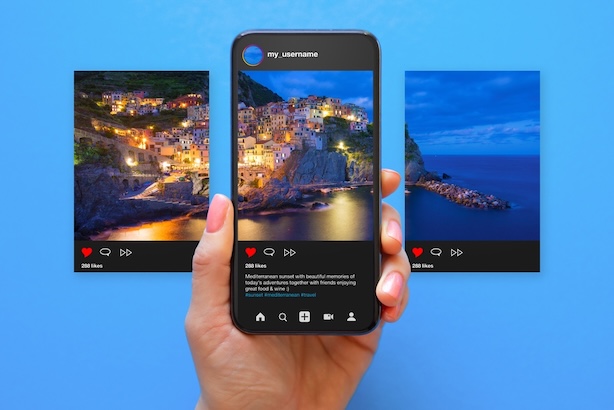Meta has unleashed a groundbreaking feature that transforms Instagram from a photo-sharing platform into a real-time location broadcaster. While the company promises enhanced connectivity, cybersecurity experts are sounding alarm bells about potential dangers lurking beneath this seemingly innocent update.
Understanding the Digital Surveillance Landscape
Instagram’s freshly minted “Map” functionality represents a seismic shift in social media architecture. Unlike traditional posting where you deliberately choose what to share, this feature operates as an always-on location transmitter that continuously broadcasts your whereabouts to selected contacts whenever you launch the application.
The mechanism mirrors Snapchat’s infamous Snap Map, but with Instagram’s massive user base—over 2 billion active accounts—the implications for personal security amplify exponentially. This feature enables users to share their real-time location with friends and view theirs on a live map, but it also raises serious privacy concerns from targeted advertising to potential stalking and misuse in abusive relationships.
McAfee’s Chief Technology Officer Steve Grobman provides crucial context: “Features like location sharing aren’t inherently bad, but they come with tradeoffs. It’s about making informed choices. When people don’t fully understand what’s being shared or who can see it, that’s when it becomes a risk.”
The Hidden Dangers Every Consumer Should Recognize
Stalking and Harassment Vulnerabilities
Digital predators can exploit location data to track victims with unprecedented precision. Relationship and parenting experts warn location sharing can turn into a stressful or even dangerous form of control, with research showing that 19 percent of 18 to 24-year-olds think it’s reasonable to expect to track an intimate partner’s location.
Steve Grobman emphasizes the real-world implications: “There’s also a real-world safety concern. If someone knows where you are in real time, that could lead to stalking, harassment, or even assault. Location data can be powerful, and in the wrong hands, dangerous.”
Professional and Personal Boundary Erosion
Your boss, colleagues, or acquaintances might gain unwanted insights into your personal activities. Imagine explaining why you visited a competitor’s office or why you called in sick while appearing at a shopping center.
The Social Network Vulnerability
The danger often comes from within your own network. Grobman warns: “It only takes one person with bad intentions for location sharing to become a serious problem. You may think your network is made up of friends, but in many cases, people accept requests from strangers or someone impersonating a contact without really thinking about the consequences.”
Data Mining and Commercial Exploitation
While Instagram claims it doesn’t use location data from this feature for ad targeting, the platform’s history with user data suggests caution. Your movement patterns create valuable behavioral profiles for marketers.
The Mosaic Effect: Building Detailed Profiles
Cybercriminals employ sophisticated data aggregation techniques. According to Grobman: “Criminals can use what’s known as the mosaic effect, combining small bits of data like your location, routines, and social posts to build a detailed profile. They can use that information to run scams against a consumer or their connections, guess security questions, or even commit identity theft.”
Immediate Action Steps: Protecting Your Digital Territory
Step 1: Verify Your Current Status
For iPhone Users:
- Launch Instagram and navigate to your Direct Messages (DM) inbox
- Look for the “Map” icon at the top of your message list
- If present, tap to access the feature
- Check if your location is currently being broadcast
For Android Users:
- Open Instagram and go to your DM section
- Locate the map symbol above your conversation threads
- Select the map to examine your sharing status
Step 2: Disable Location Broadcasting Within Instagram
Method 1: Through the Map Interface
- Access the Map feature in your DMs
- Tap the Settings gear icon in the upper-right corner
- Select “Who can see your location”
- Choose “No One” to completely disable sharing
- Confirm your selection
Method 2: Through Profile Settings
- Navigate to your Instagram profile
- Tap the three horizontal lines (hamburger menu)
- Select Settings and Activity
- Choose “Privacy and Security”
- Find “Story, Live and Location” section
- Tap “Location Sharing”
- Set preferences to “No One”
Step 3: Implement Device-Level Protection
iPhone Security Configuration:
- Open Settings on your device
- Scroll to Privacy & Security
- Select Location Services
- Find Instagram in the app list
- Choose “Never” or “Ask Next Time”
Android Security Setup:
- Access Settings on your phone
- Navigate to Apps or Application Manager
- Locate Instagram
- Select Permissions
- Find Location and switch to “Don’t Allow”
Step 4: Verify Complete Deactivation
After implementing these changes:
- Restart the Instagram application
- Check the Map feature again
- Ensure your location doesn’t appear
- Ask trusted contacts to confirm you’re invisible on their maps
Advanced Privacy Fortification Strategies
Audit Your Digital Footprint
Review all social media platforms for similar location-sharing features. Snapchat, Facebook, and TikTok offer comparable functionalities that require individual deactivation.
Implement Location Spoofing Awareness
Some users consider VPN services or location-spoofing applications, but these methods can violate platform terms of service and create additional security vulnerabilities.
Regular Security Hygiene
Establish monthly reviews of your privacy settings across all social platforms. Companies frequently update features and reset user preferences without explicit notification.
Grobman emphasizes the challenge consumers face: “Most social platforms offer privacy settings that offer fine-grained control, but the reality is many people don’t know those settings exist or don’t take the time to use them. That can lead to oversharing, especially when it comes to things like your location.”
Family Protection Protocols
If you’re a parent with supervision set up for your teen, you can control their location sharing experience on the map, get notified when they enable it, and see who they’re sharing with. Implement these controls immediately for underage family members.
Understanding the Technical Mechanics
Data Collection Frequency
Your location updates whenever you open the app or return to it while running in the background. This means Instagram potentially logs your position multiple times daily, creating detailed movement profiles.
Data Retention Policies
Instagram claims to hold location data for a maximum of three days, but this timeframe applies only to active sharing, not the underlying location logs the platform maintains for other purposes.
Visibility Scope
Even with location sharing disabled, you can still see others’ shared locations on the map if they’ve enabled the feature. This asymmetric visibility creates potential social pressure to reciprocate sharing.
Red Flags and Warning Signs
Monitor these indicators that suggest your privacy may be compromised:
- Unexpected visitors appearing at locations you’ve visited
- Colleagues or acquaintances referencing your whereabouts without your disclosure
- Targeted advertisements for businesses near places you’ve recently visited
- Friends asking about activities they shouldn’t know about
The Broader Cybersecurity Context
This Instagram update represents a concerning trend toward ambient surveillance in social media. Companies increasingly normalize continuous data collection by framing it as connectivity enhancement. As consumers, we must recognize that convenience often comes at the cost of privacy.
The feature’s opt-in design provides some protection, but user reports suggest the system may automatically activate for users with older app versions who previously granted location permissions. This highlights the importance of proactive privacy management rather than reactive protection.
Your Privacy Action Plan
Immediate (Next 10 Minutes):
- Disable Instagram location sharing using the steps above
- Check device-level location permissions for Instagram
This Week:
- Audit other social media platforms for similar features
- Review and update privacy settings across all digital accounts
- Inform family members about these privacy risks
Monthly Ongoing:
- Monitor Instagram for new privacy-affecting features
- Review location permissions for all mobile applications
- Stay informed about emerging digital privacy threats
Expert-Recommended Protection Strategy:
Grobman advises a comprehensive approach: “The best thing you can do is stay aware and take control. Review your app permissions, think carefully before you share, and use tools that help protect your privacy. McAfee+ includes identity monitoring, scam detection. McAfee’s VPN keeps your IP address private, but if a consumer allows an application to identify its location via GPS or other location services, VPNs will not protect location in that scenario. Staying safe online is always a combination of the best technology along with good digital street smarts.”
Remember: Your location data tells the story of your life—where you work, live, worship, shop, and spend leisure time. Protecting this information isn’t paranoia; it’s fundamental digital hygiene in our hyper-connected world.
The choice to share your location should always remain yours, made with full awareness of the implications. By implementing these protective measures, you’re taking control of your digital footprint and safeguarding your personal security in an increasingly surveilled digital landscape.












